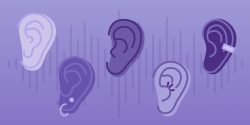 All too often, we forget about a critical component of successful communication: being a good listener. Communication is, after all, a two-way street; being an effective communicator not only relies on being clear in what you say or do, but also in truly hearing and valuing people’s perspectives, needs, concerns and ideas, too. Listening allows us to empathize and relate to others, giving us a glimpse into their world and their day-to-day life. In turn, this additional information empowers us to better understand the problems we’re trying to solve and bring our best resources and skills to the table.
All too often, we forget about a critical component of successful communication: being a good listener. Communication is, after all, a two-way street; being an effective communicator not only relies on being clear in what you say or do, but also in truly hearing and valuing people’s perspectives, needs, concerns and ideas, too. Listening allows us to empathize and relate to others, giving us a glimpse into their world and their day-to-day life. In turn, this additional information empowers us to better understand the problems we’re trying to solve and bring our best resources and skills to the table.
Becoming a skilled listener takes time and practice. The reasons for this are many: we bring our own opinions and perspectives to conversations, often coloring what we think we hear; we have our own busy lives, filled with distractions and daily demands that require our attention, leaving less of it to give to others; or we may feel like we already have a solution to the problem we are hearing about, prompting us to tune out and not be fully present.
So how can we move towards actual, intentional listening? In her recent book “Getting to the Heart of Science Communication,” author Faith Kearns details, among many other topics related to SciComm, how honing our listening skills will make us better communicators. Below are some ideas about how to listen with intent, all in an effort to level-up your communications abilities.
Listening techniques to help engage more fully:
- Active listening: Active listening generally includes three basic tenets, including nonverbal acknowledgement by the listener that the speaker is being heard, paraphrasing and repeating back to the speaker what was heard, and questions that relate to what the speaker is saying in order to further the conversation. This back-and-forth sends a message of interest and engagement to the speaker, and helps the listener be certain they fully understand what the speaker is saying.
- Deep listening: Sometimes interaction with the speaker through active listening can be distracting, and the speaker needs time and space to completely say what is on their mind without interruption. Give the speaker that space, knowing that it often might include times of silence; this can be difficult for some listeners and can invite the temptation to fill that space.
- Embodied listening: Oftentimes when listening to someone, it provokes reactions within us that provide useful information that may otherwise go unnoticed. Do some speakers make your stomach clench or cause you to sigh deeply? Do others cause the opposite, and you find yourself leaning in and breathing deeply? This is valuable information, and although it may be difficult to recognize in the moment, it can tell us how we are hearing and reacting to the speaker ourselves.
Learning to listen like professionals in various fields:
- Listening like a lawyer: Before getting into a strictly information-gathering discussion with someone, it’s important to build a relationship and rapport with that person. Listen to what they have to say and try to understand where they are coming from. It can take time; yet as a relationship begins to emerge, the listener can take a step back and detach a bit, taking a more objective viewpoint.
- Listening like a doctor: Even if you believe you may have the answer or advice to give about how to fix a problem or approach an issue, an important listening quality is to let the speaker tell you everything they wish to without interruption. We often have the inclination to jump in with solutions as soon as we see them (or think we see them), but the speaker is often more comfortable and open when the listener simply listens fully before trying to fix the problem.
- Listening like a journalist: Being able to provide the speaker with space to tell their story completely is critical to understanding an issue. Instead of asking ‘yes’ or ‘no’ questions, which can shut down a conversation, asking people how something makes them feel can open the door for a fuller discussion. Also, allowing for quiet or silence in a conversation allows the speaker to feel there is space to talk if they need or wish to, which can lead to offering more information that better completes the story.
- Listening like a therapist: Similar to a lawyer, a therapist needs to develop a trusting relationship and good rapport with their client. Listening with one’s “whole being” and being fully present can do that, while also asking open-ended questions or offering invitations for the speaker to “say more.” As you build that relationship and trust, you can then help the speaker connect the dots and potentially see the problem they are trying to solve from a different perspective.
- Listening like an ethnographer: Although some aspects of ethnography can be problematic or controversial, listening like an ethnographer teaches us how to hear what’s actually being said. For example, you may find yourself asking someone about the nuts-and-bolts of a particular environmental problem, but instead they respond by telling you about how it made them feel. Being able to give space for people to share their thoughts, fears, concerns and needs might be unfamiliar territory, but as with most kinds of listening, it can build relationships and unearth the real issues at play, which can help lead to more fruitful solutions in the end.

